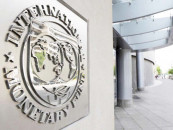Violence as performance
Does the presence of a TV camera or the promise of wide exposure in itself stimulate the performance of violent acts?

Violence as performance
In this instance, activists of the Hindu Jagarana Vedike barged into a July 28 birthday celebration at a homestay resort in Mangalore, partly stripped and molested five girls and beat up seven boys in vigilante action to protect “Indian culture”. The attack was extensively captured on camera by a reporter, Naveen Soorinje of Kasturi TV, who had been alerted about the planned attack. The footage was repeatedly shown on many news channels. Soorinje has now been remanded in judicial custody till November 20. The police, criticised by fellow journalists for “shooting the messenger”, said they were executing a court warrant.
Journalists and liberal activists in Mangalore have called this an attack on the freedom of the media but the police maintain that since Soorinje had prior information about the attack, he should have made efforts to contact the police before it took place. The implication is that TV news professionals look for sensational footage to get more eyeballs in an increasingly competitive environment of 24/7 news channels, always looking to break news. And the vigilantes themselves look for coverage and even ‘sex up’ the action for the camera.
On July 9, Indian viewers watched horrifying footage of the obscene attack on a 17-year-old girl on her way home from another birthday party at a night club in Guwahati, Assam. The footage captured by a reporter of NewsLive TV showed about 30 men molesting the poor girl in a posh area of the city while bystanders watched the action. The Assam police said they have no record of a call for help from any media organisation during the time of the attack. Assam Chief Minister Tarun Gogoi said, “I cannot approve the fact that the TV crew went on rolling their tapes for almost 45 minutes without making efforts to save the girl.” TV reporter Gaurav Jyoti Neog was arrested on charges of instigating obscene acts against a woman. The footage became a national television sensation and went viral on YouTube.
The question of the media’s role as observer or responsive agency was poignantly posed in the case of South African photojournalist Kevin Carter. Winner of the Pulitzer Prize for his 1993 photograph of a starving child in Sudan being watched by a vulture nearby, Carter was widely criticised for taking the picture and leaving without helping the girl, who was trying to get to a feeding centre. The accompanying New York Times story had said it was not known whether the girl made it to the centre. Carter said he left because he had finished his ‘job’. “The man adjusting his lens to take just the right frame of her suffering might just as well be a predator, another vulture on the scene,” one newspaper said. Carter committed suicide in 1994.
In the Mangalore case, the morality in operation seems to be of a different nature. The chairperson of the State’s Commission for Women, C Manjula, an appointee of the ruling Bharatiya Janata Party (BJP) government, submitted a report finding fault with the young people at the birthday party, hinting that they were consuming drugs and involved in prostitution. But the police investigation clearly said there was no evidence of drug abuse at the birthday party. Liberal activists suggest that the police action against the TV journalist in the Mangalore instance is retaliation against the repeated exposes of Hindu extremist action in the district, which has traditionally been a BJP stronghold. In another much-televised attack on a pub in 2009 by activists of the Sri Rama Sene, Hindu activists were captured on camera molesting girls and beating up boys for drinking alcohol. A case was filed but not much came of it for the accused, Subhash Padil, who led the birthday party attack this July.
Published in The Express Tribune, November 9th, 2012.
















COMMENTS
Comments are moderated and generally will be posted if they are on-topic and not abusive.
For more information, please see our Comments FAQ